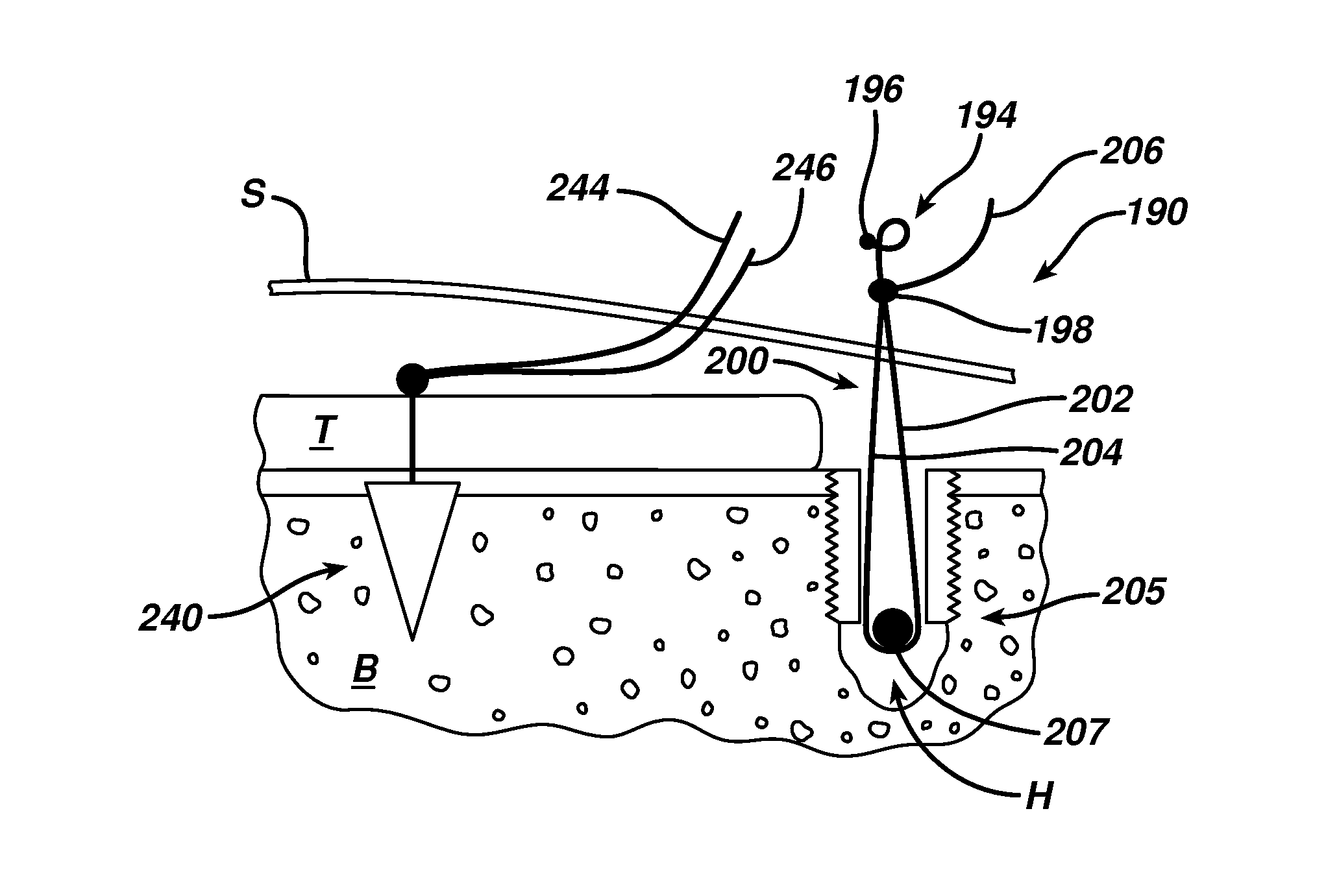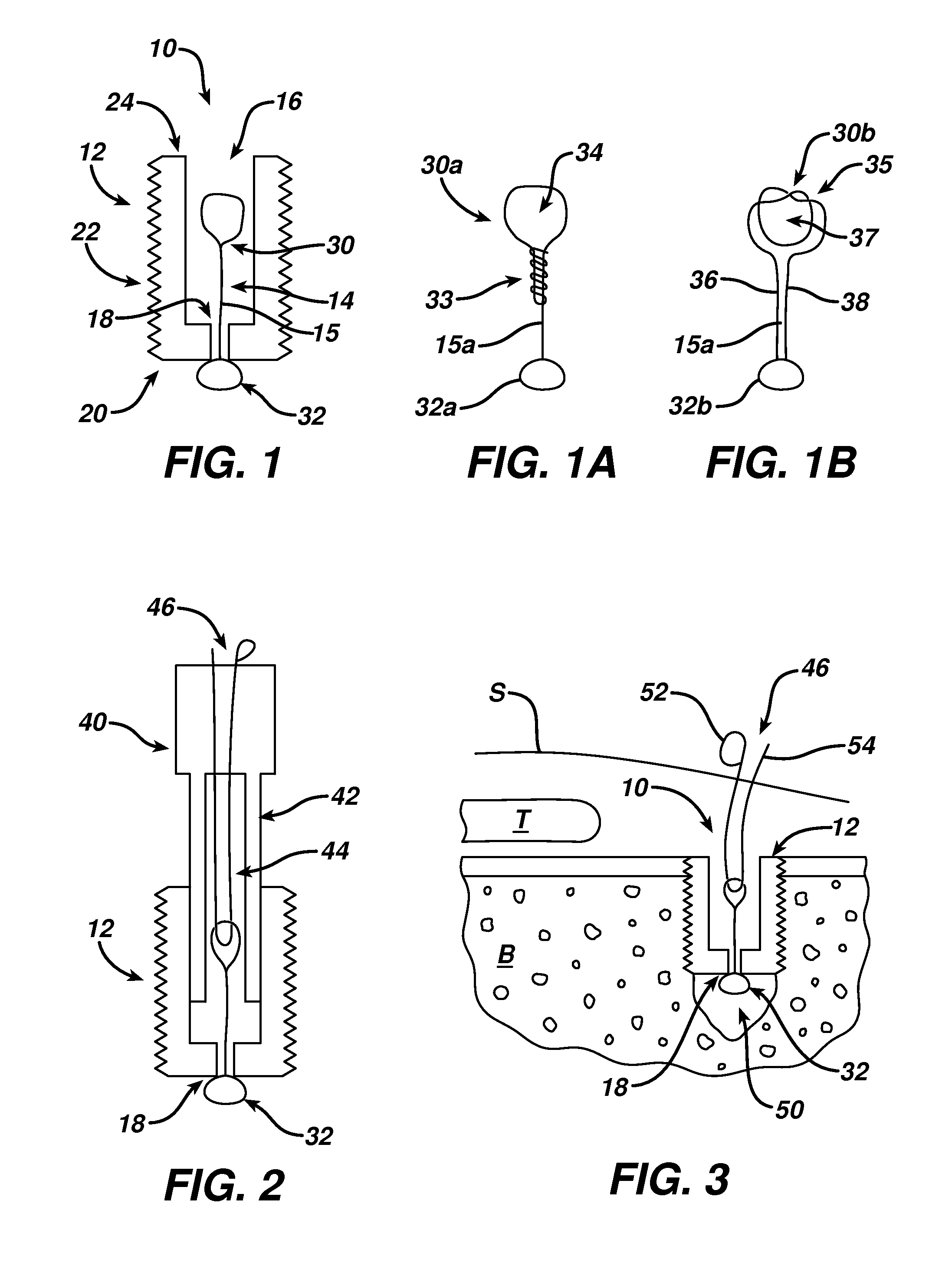Surgical filament snare assemblies
a technology of filament snares and snares, applied in the field of filament assemblies, can solve the problems of sliding knot slippage, loop enlargement, additional knots, etc., and achieve the effect of reducing the number of half-hitches or other knots
- Summary
- Abstract
- Description
- Claims
- Application Information
AI Technical Summary
Benefits of technology
Problems solved by technology
Method used
Image
Examples
Embodiment Construction
[0054]This invention may be accomplished by a surgical filament snare assembly including an anchor capable of being fixated in bone and having a filament engagement feature. A first filament has a noose, or a loop capable of being formed into a noose, on a first, proximal portion of at least a first limb and has a second portion connected, including slidably or fixedly connected, directly or indirectly, to the filament engagement feature of the anchor. The noose, such as one or more half-hitches, a Lark's Head knot, or a hangman-type noose, is capable of receiving at least one end of a free filament limb or a portion of another filament. The noose strangulates the free filament limb or other filament when tension is applied to the noose, to the free filament limb, and / or to the other filament.
[0055]In certain preferred constructions, at least a first free filament limb, which in some constructions is a length of the first filament and in other constructions is a second filament, is ...
PUM
 Login to View More
Login to View More Abstract
Description
Claims
Application Information
 Login to View More
Login to View More - R&D
- Intellectual Property
- Life Sciences
- Materials
- Tech Scout
- Unparalleled Data Quality
- Higher Quality Content
- 60% Fewer Hallucinations
Browse by: Latest US Patents, China's latest patents, Technical Efficacy Thesaurus, Application Domain, Technology Topic, Popular Technical Reports.
© 2025 PatSnap. All rights reserved.Legal|Privacy policy|Modern Slavery Act Transparency Statement|Sitemap|About US| Contact US: help@patsnap.com



